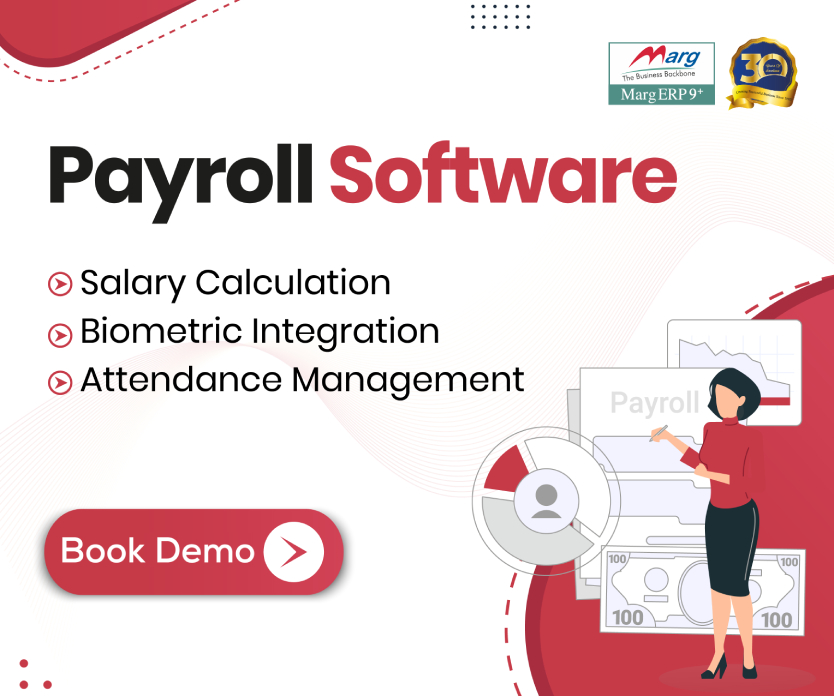All About Leave Policy
A Leave policy is a written contract between an employer and employee. It sets out the rules and conditions under which employees must work and the reasons why they are entitled to take leave. The company must ensure that workers are aware of their rights, duties, and obligations under this contract so that they can be given advance notice if any leave plans change or there is some significant question about whether or not a worker is entitled to take leave.
Importance of Leave Policy
Leave policies are an important part of any organization. They help employees to take time off and balance their work life.
A leave policy is a set of guidelines that define the procedures for taking time off, how long it will be, what happens when employees return, and the conditions under which they can take it.
The importance of a leave policy is often underestimated by employers, who think that they don’t need to worry about it because their employees are happy with their work-life balance. However, a study shows that the number one reason why people quit their job is due to poor leave policies.
Leave policy is a very important topic in the workplace. It can make or break a company’s reputation. However, it is not just about giving employees leave. It also includes how much they are allowed to take and when they can take it. Some companies give employees unlimited leave, while others have a set number of days that employees can take off in a year.
A leave policy is an important part of any organization’s HR strategy. It can help to ensure that employees have the opportunity to take time off work for personal reasons and that they are able to return to their jobs without feeling penalized. A good leave policy will also allow employees to take time off in a flexible manner so that they can balance their work and personal lives as best as possible.
A leave policy should be designed in consultation with your employees. They should be given the opportunity to suggest specific types of leaves that would be beneficial for them and should also have a say in how long each type of leave will last. In order for a leave policy to be effective, it must be communicated clearly between both parties.
Free Download Payroll Software
Anatomy of a Leave Policy
An effective leave policy can help your business manage employee absences and keep the workplace running smoothly. Here’s an overview of what to include in a leave policy:
1. Purpose
Your leave policy should have a specific purpose, such as providing employees with time off for medical emergencies or bereavement. Make sure that the purpose is clear to employees and that it is consistent with company values and policies.
2. Eligibility
Your leave policy should specify who is eligible for leaves, including full-time, part-time, temporary, probationary, or contract workers. You may also want to consider granting leaves of absence to managers and executives as well as key members of your team.
3. The Company’s Culture and Values
Some companies value hard work more than others; if this is the case, granting employees more time off may not be in line with company policies or ideals. It’s important to create a Leave Policy that reflects your organization’s core beliefs and values so everyone understands and follows it uniformly.
A leave policy is a document that outlines the company’s expectations for employees who take time off work. It should include information on how long employees are expected to be absent, what type of leave they are eligible for, and how their absences will be handled. A leave policy can also specify which types of disciplinary action will be taken against an employee who does not adhere to its provisions.
Types of Leave Policy
The leave types are governed by the Employment Rights Act 1996. Employers are required to give employees the following types of leave:
Paid Leave
Paid leave is typically granted as a benefit to employees in order to allow them time off work for personal reasons or for medical treatment. Policies regarding paid leave may vary from company to company, but most usually offer at least one week of paid vacation per year as well as sick days. Some companies also offer additional benefits such as bereavement leave or family medical leave.
Paid Family Leave
This type of leave is available to employees who have been with their employer for at least 12 months and have worked 1,250 hours during that time. Paid family leave can be used for childbirth, adoption, or foster care placement, as well as caring for a sick family member. The benefit amount varies by state but is typically around two-thirds of an employee’s regular salary (or equivalent).
Annual Leave
Annual leave is a statutory holiday in many countries, including the United Kingdom, Canada, Australia, and New Zealand. In these countries, employees are entitled to take a specified number of days off work each year. Annual leave can be used for vacation purposes or to take time off for personal reasons.
The purpose of annual leave is to provide employees with a break from their regular work schedule and allow them to spend time with family or friends. It is also an opportunity for employers to reduce staff turnover and improve morale by providing employees with some downtime away from the office.
Sickness Absence
Sickness absence is a policy that allows employees to take time off work due to illness or injury. This policy can be beneficial for both the employee and the company. The purpose of sickness absence is to allow employees to recuperate from an illness or injury, which in turn will help them return to work feeling more refreshed and able-bodied. When an employee takes time off due to sickness, it reduces their chances of getting sick in the future and also helps them get back on track faster when they do return. Additionally, taking regular breaks can help reduce stress levels and improve overall productivity at work.
Maternity Leave
Maternity leave is a policy in place in many countries that allows mothers to take time off work to care for their new child. In the United States, maternity leave is typically 12 weeks, although it can be more or less depending on the state. Some employers also offer partial or full pay during this time. The main pro is that it allows new mothers to spend time with their newborn children and bond with them without having to worry about finances. It can also help new mothers feel more connected at work and increase productivity later on, when they return from maternity leave.
Free Download Payroll Software
Paternity Leave
Statutory Maternity Pay (SMP) and Statutory Paternity Pay (SPP) are for parents who have been employed for at least 26 weeks before the birth of their child. These leaves are usually paid at a flat rate, minus statutory deductions. Employees must be entitled to SMP or SPP in order to take these leaves.
Rules For Granting Leaves
When it comes to granting leaves, there are a few key things to keep in mind. First and foremost, the frequency of granting leave should be decided based on the specific needs of your organization. Monthly grants are typically more common than annual grants, but both can be used depending on the situation.
Another important factor to consider is the expiry period of any granted leave. This will determine how long employees have after their leave has been granted before it expires (typically, this is one month). Finally, grant eligibility should also be considered when deciding how much leave to grant employees.
For example, top-up or proating leaves may be available depending on an employee’s length of service with your organization or contractually agreed upon criteria. The frequency of granting leave will depend on the company policy, but most companies usually grant leave monthly, quarterly, or annually.
The expiry period for the granted leave will also depend on the company policy, but most leaves have an expiry date within one year after it is granted. Top-up leave grants can be given if an employee has already taken their regular amount of paid vacation time and would like more time off work.
Prorating Leave can also happen if an employee has unused vacation days that they have accrued over a certain period of time and those days are needed to cover their sick day or personal holiday in advance.
Leave Rules
When it comes to taking time off work, there are a few things that you should keep in mind. First and foremost, make sure that your leave policy is in line with the company’s policies and regulations. Secondly, be sure to take the time off you need. – don’t try to cram it all into one leave period. Finally, be prepared for questions from your boss or co-workers about why you took your leave. – let them know ahead of time what your plans are so they can avoid any awkward conversations.
1) Employees must have at least one year of service with their current employer in order to be eligible for any type of leave.
2) All leaves must be approved by the human resources department of the company, and employees should receive notification about the leave as soon as possible.
3) Leaves can only last for a certain amount of time. – typically, they will last for six weeks or less.
4) Employees are usually required to pay back any wages they received while on leave and may also incur fines if they do not return to work on schedule.
5) Leave policies should be specific to the company and its needs.
6) Employees should be given ample notice of their leave policy so they are aware of what is expected of them while on leave.
7) Employees should have the option to take partial or full leaves, depending on their situation and need for time away from work.
8) A company must provide at least one paid leave option to employees. This can be in the form of vacation, sick days, or bereavement leave. The amount of time an employee is entitled to receive payment varies by state and may not be equal to the total number of hours worked during that period.
9) Leaves must be taken in a timely manner so that employees do not lose any pay or benefits while away from work, and employers must provide reasonable accommodations if needed during leaves (such as allowing telecommuting).
Key Ingredients of a Good Leave Policy
A good leave policy can help your company attract and retain top talent. Here are some key ingredients:
- Flexible leave policies that allow employees to take time off for personal reasons or to care for a family member. A leave policy that is flexible allows employees to take time off for personal reasons, such as illness or family emergencies, as well as for professional development opportunities. This allows employees to balance their work and personal lives in a way that works best for them.
- A generous maternity/paternity leave policy that allows mothers and fathers to take up to 12 weeks of unpaid leave after the birth or adoption of a child, respectively.
- A flexible work schedule policy that allows employees to work from home one day per week if desired.
- An employee assistance program (EAP) that provides support during times of stress or difficulty at work, such as when an employee is dealing with a family illness or a personal crisis outside of work hours.
- A paid time off policy provides employees with a financial incentive to take time off work, which encourages them to use their leaves strategically instead of taking them all at once when they are feeling stressed out or overwhelmed at work. This helps keep staff morale high and encourages workers to take advantage of available leaves.
Conclusion
A leave policy is a set of guidelines that dictate how employees are allowed to take time off work. In order to create a leave policy, employers must first understand the different types of leaves that employees may be eligible for and the purposes for which they can be used. Once this information is established, policies can be created outlining when an employee may take each type of leave, as well as specifying the amount of time they are allowed to spend away from work. Lastly, these policies should be communicated to employees in clear and concise language so that everyone understands them.







Thank you that is very helpful for me, as a new site has been inundated with comments that seem OK at first glance but then get repeated with a slight change of wording. I have something concrete to go on now and will delete quite a lot of them.
Excellent post. I was checking constantly this blog and I am impressed! Extremely useful information particularly the last part I care for such information a lot. I was seeking this certain info for a long time. Thank you and best of luck.
Your current positions constantly have got alot of really up to date info. Where do you come up with this? Just stating you are very innovative. Thanks again
Great post, thank you so much for sharing. Do you happen to have an RSS feed I can subscribe to?